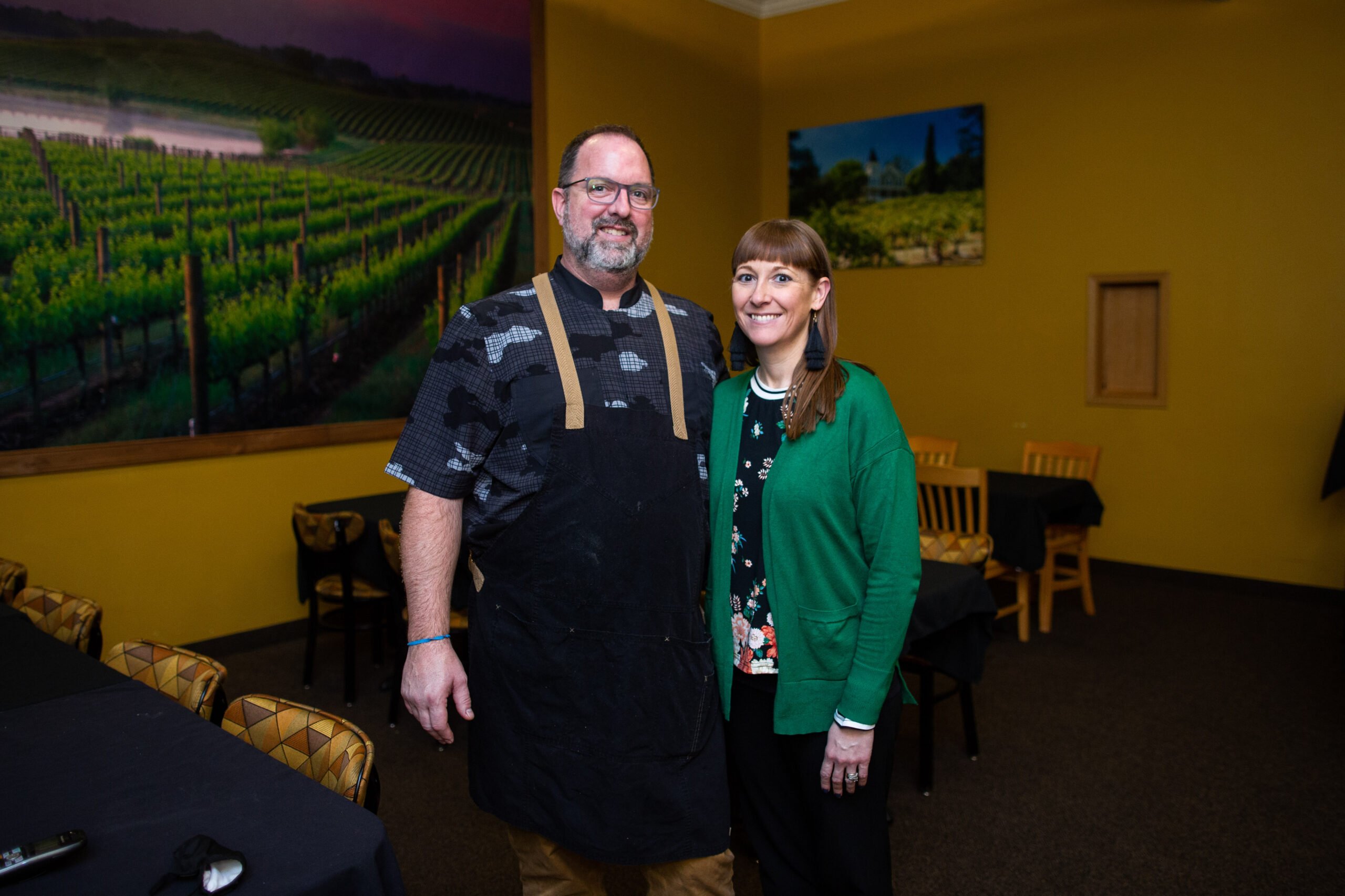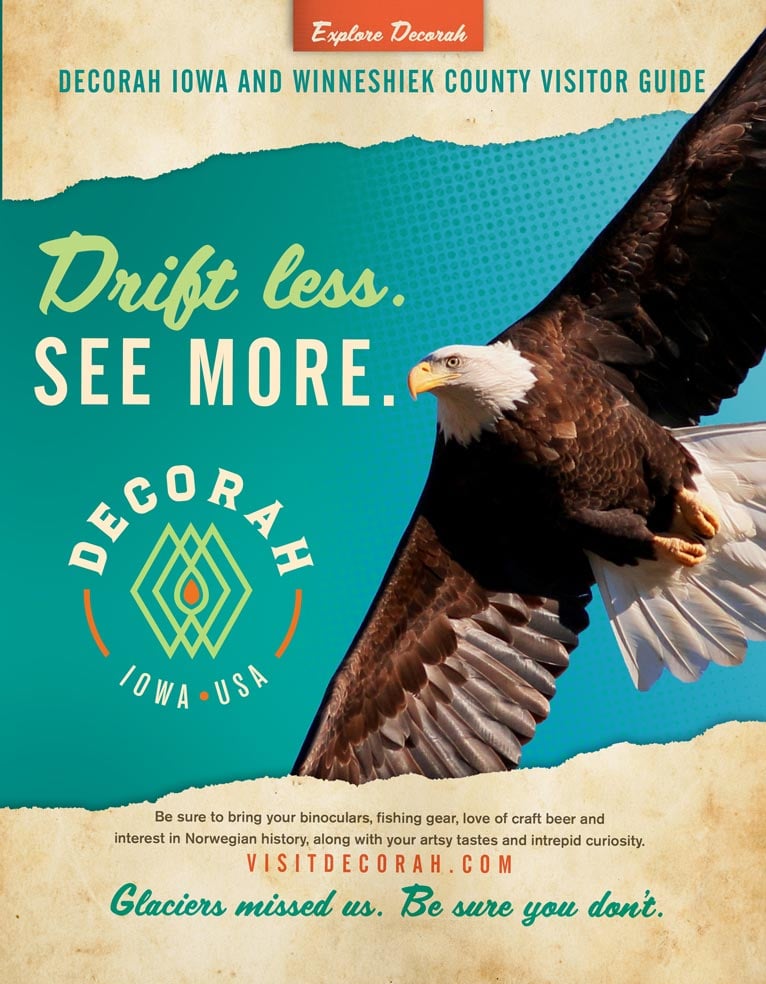
The Upper Iowa River is perhaps the most widely-recognized river in Iowa and one of the first in the nation to be nominated as a national Wild and Scenic River in the 1960s.
Thanks largely to private landowners and organizations that own and care for it, the river corridor has retained its scenic and natural character and become a premier recreational river. Paddlers will share this river with local families, anglers, bird enthusiasts, campers, hikers, and the wildlife that call this diverse corridor home. The river originates in LeRoy, Minnesota before meandering 136 miles to the Mississippi River near New Albin, Iowa. The river and corridor change along its length, going from a narrow and winding savanna river to a wider and more dynamic river flanked by dramatic vertical limestone palisades and forested bluffs.
Rules and Regulations: Below are guidelines that will be helpful when you paddle the Upper Iowa River. However, it is not a complete list of all paddling regulations and always be sure laws haven’t changed. For more information visit www.iowadnr.gov or contact the DNR Central Office in Des Moines at 515-725-8200.
Interactive map available here: https://upperiowariver.org/recreation/paddling/
Discover places to rent canoes, kayaks, and tubes along the Upper Iowa River. Shuttle services available for all rentals, as well as personally owned boats at select locations.
Northeast Iowa (especially Winneshiek County) is known to have some of the most pristine streams in the entire state, perhaps the upper Midwest.
These streams provide excellent fishing opportunities for anglers of any skill level. Other bodies of water, including the Upper Iowa River (the fastest moving river in Iowa), as well as the man-made 33-acre Lake Meyer (15 mi SW of Decorah), are other popular stops for fishing. Currently, there are 148 different varieties of fish in Iowa. North and South Bear creeks (located north of Decorah) are considered by both the Iowa Department of Natural Resources and fishermen alike, to be the best fishing in Iowa. Come see for yourself!
The Upper Iowa River supports cold and warm water fish species but three dams restrict fish movement and species prevalence. Smallmouth bass, walleye, trout, and non-game fish are abundant throughout the river. Trout are especially prevalent near the mouth of coldwater streams, and more than 30 of these streams make their way into the Upper Iowa River. Below the dams, sauger, sturgeon, northern pike, flathead and channel catfish, yellow perch, and white bass migrate up from the Mississippi. Smallmouth bass and walleye prefer rocky or sandy substrate, especially in the deepest pools. Dead trees, boulders, and root balls provide fish habitat, but beware, they also create dangerous under currents. Local trout fishing maps and guides can be picked up locally or downloaded from northeast iowarcd.org. The iowadnr.gov fishing website provides information on fishing regulations, licenses, and weekly fishing reports. Connections with other local anglers can be made through the Iowa Coldwater Conservancy, Trout Unlimited, or the Hawkeye Fly Fishing Association.
Not convinced this is where the big fish live? The Decorah Fish Hatchery is one of only 6 hatcheries in the state. They have a regular stocking schedule that runs about 7 months out of the year. They stock seventeen streams throughout the area. The hatchery is also a great place to visit. Pack a lunch and grab your camera. This beautiful site welcomes people to ask questions about fishing, feed the fish for only 25 cents, or fish at Siewers Springs, located adjacent to the hatchery. Contact the Fish Hatchery at 563-382-8324.
Are you new to fishing? Looking for a great father-son activity? Or a memorable weekend with your best buds? Then take advantage of our excellent Professional Guide Service listed below. Along with a listing of our fishing “hot spots.”
Helpful links:
Iowa Department of Natural Resources
Iowa Driftless Trout Unlimited Chapter
Friends of the Decorah Fish Hatchery
Iowa Fishing Regulations
Below are guidelines that will be helpful when you fish Iowa. However, it is not a complete list of all fishing regulations, and always be sure laws haven’t changed. For more information, visit www.iowadnr.gov or contact the DNR Central Office in Des Moines at 515-725-8200.
Stream Classification. Before you plan your trip, it is important to understand how trout waters are classified in Winneshiek County. The trout management in Iowa divides trout fisheries into the three categories listed below. Please read each definition to gain an understanding of which stream segments contain catchable trout, are open to the public or require permission from property owners.
Catchable Stocked Streams are open to the public and regularly stocked with catchable-sized trout that measure 10 to 12 inches in length and weigh about one-half pounds.
Put-And-Grow Streams require landowner permission to fish and are stocked with fingerlings or young trout that measure about 10–15 cm. These streams produce “stream-raised” trout rather than ones grown to catchable-sized in rearing stations and are only stocked once a year.
Special Regulation (SR) Streams are open to the public and can only be fished using artificial lures. SR Streams in Winneshiek County include South Pine Creek, which has a catch-and-release regulation for all trout.
Iowa’s Trout Season. Iowa’s trout season differs from Minnesota, Wisconsin, and Illinois in that the state offers continuous year-round fishing for brook, brown and rainbow trout.
Daily Bag Limit. The daily bag limit for trout is five and the possession limit is 10.
Fishing Licenses and Trout Stamps. Anglers who fish for trout are required to pay the trout fee in addition to an Iowa fishing license. Both expire each year in January. However, children under 16 years of age may fish for free and possess trout if they fish with a licensed adult who has paid the current trout fee and they limit their combined catch to the daily limit of five trout. If young anglers want to fish for and keep their own limit of trout, they only need to purchase the trout fee.
Credit to Northeast Iowa RC&D
Cardinal Marsh Wildlife Area checks a lot of the outdoor recreation boxes in its nearly 1,200 acres.
Originally established in the 1950s, you will find a mix of hardwood timber, native prairie, a network of marshes, and a winding river, this public area on the west edge of Winneshiek County offers a high-quality natural getaway away from the crowds.
Parking lots nearly ring the area providing a number access points. The main marsh features a newly installed concrete boat ramp on the northwest corner. At the smaller water control structures, access is by walk-in, meaning paddlers and hunters will need to carry the crafts a few hundred yards.
At full pool, the main marsh is a nice place to kayak and view marsh wildlife. Just over the marsh berm to the north is the Turkey River which offers excellent paddling and fishing, especially for walleye. There is canoe access upstream at a stream crossing.
Cardinal Marsh is building a reputation as a high quality dove hunting area due to the number of sunflower fields that doves want to use. It offers deer, turkey, and pheasant hunting is an excellent place to hunt waterfowl and is a productive trapping area.
“Cardinal Marsh is absolutely a good pheasant area that gets better as the winter goes on,” said Haindfield. “The cattails and willow batts offer good winter habitat and the corn food plots provide a food source.”
The legend of Cardinal Marsh
The call came in 15–20 years ago. A boyfriend and girlfriend were hunting raccoons in the forest section of Cardinal Marsh one night when they reported seeing an unmistakable dark figure go by–it was, they said, Bigfoot.
The sighting, however, has not been verified.
Access to the Turkey River is available at Smallest Church Park, west of Festina off either Highway 150 or County Road W14.
Picnic areas are available. Check the Turkey River water levels before all trips. Always paddle responsibly and safely.
Location: West of Festina off either Highway 150 or County Road W14.
The woodlands, bluffs, habitat diversity, remoteness, and other natural characteristics of the river corridor make it a bird haven.
It is part of the Mississippi River Flyway, near a Globally Important Birding Area, and connected to large, remote tracts of private and public forests, wetlands and prairies, wildlife management areas (WMAs), and other natural areas. Hundreds of species migrate through in the spring and many additional species nest along the river. A 2014 survey identified eight eagles nests visible from the river during fall foliage. More would be visible if the leaves weren’t blocking the view! During winter months, open sections of the river help birds and other wildlife find food to survive and thrive. Check out bba.iowabirds.org, iowadnr.gov, and iowaaudubon.org to learn more about local birding opportunities or get in touch with the local Iowa Ornithologist Union, which offers information by county as well as GPS coordinates.
Waterfall Wayfinding
The Upper Iowa River Watershed boasts hundreds of springs and dozens of beautiful waterfalls, including Malanaphy Springs which is accessible from the river. Dunning Springs, Twin Springs, and the second largest spring in Iowa, Siewers Spring are all nearby. Siewers Spring provides water for the fish hatchery in Decorah as well as one of the nation’s most universally accessible trout streams, Trout Run. All of the coldwater streams that flow into the river are fed by springs. Coldwater Creek, which emerges from the base of a 100-foot tall bluff, is publicly accessible in the Coldwater Spring State Preserve one mile north of the river at the only natural entrance to Coldwater Cave, a National Landmark, and Iowa’s longest cave.
Geologic Journeys
Rising more than 250 feet from the river along several stretches, towering limestone bluffs, chimney rocks, rock outcroppings, cliffs, and entrenched meanders add interest to Upper Iowa River excursions. Watch for the most well-known landmarks: Plymouth Rock, Chimney Rock, Bluffton Palisades, Pulpit Rock, Phelps Park Bluffs, Decorah Palisades, Elephant Head Bluff, and Blackhawk Bluff. Many consider these majestic features to be the river’s hallmark. Fossils are often identified within the limestone bedrock or in rocks lining the bottom of the river. Together, the sights above and below create a sense of isolation, a deep sense of history, and confirm that the river is in the Driftless Area, an ancient and unique Midwest landform bypassed by the last continental glacier. In the words of canoekaya.com, “Tucked away in an isolated corner of northeast Iowa is a cliff-lined gorge that the glaciers forgot to flatten: the Upper Iowa River valley.” For more information about the geology of the Upper Iowa River Watershed, visit https://www.iihr.uiowa.edu/igs/publications/uploads/TIS-54.pdf
